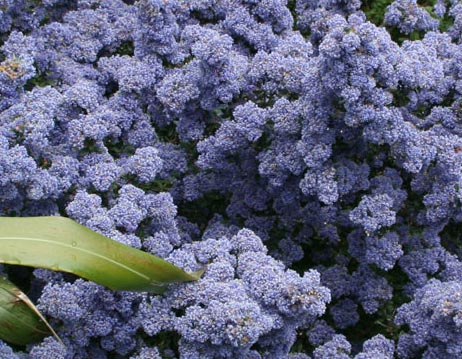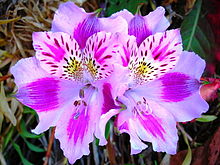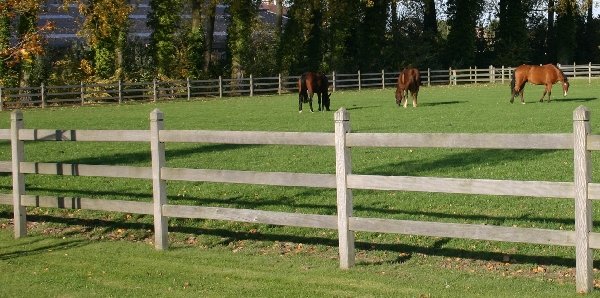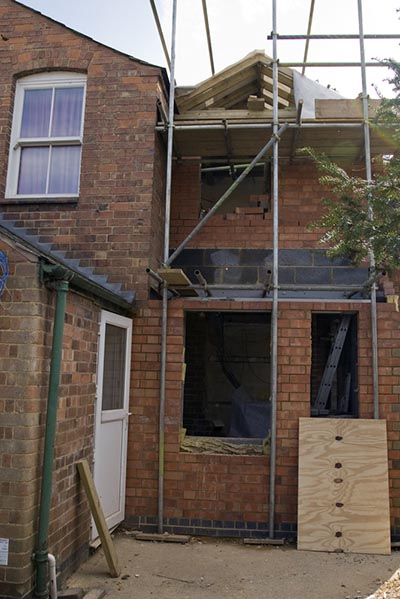Approved Trader
Choosing what to plant in your flower beds
Choosing what to plant in your flower beds An important part of your gardens design is creating an attractive flower bed, brightening up your garden creating a garden space that you can enjoy your time in.
Air Conditioning
Services
We are here when you need us to service both your residential and comercial properties.
Find a local trader and receive competitive FREE quotes? Whether you're looking for double glazing, to build a conservatory or in need of a builder to construct a home extension, we can help you find approved traders from your local area
Light effects: They are vital to the success of the scene of your flower bed. Some arrangements will vibrate under the sun while others (shades) will be exacerbated under changing skies.
The color temperature: Important element to take into consideration. Note that the colours often called 'cold' combine well to say 'hot' colours, creating a delicate colour balance for your flower beds.
Design flower beds will be different according to the aesthetics of the garden. Flowerbeds adopting freer forms, often elongated and consist of a variety of plants and flowers(mixed borders)
There are two main types of flowerbed:
In ornate isolated island in the middle of a lawn, for example, visible from all sides.
In border , backed by a hedge, fence, wall, etc.. In this case one has the tallest plants in the back and smaller on the front.
From there, the field of possibilities is opened. As you harmonize colors, heights and flowering periods, etc.
Perennials - Depending on your preferences you can choose blue perennial geraniums or roses, yellow coreopsis and rudbeckia, blue sage, lupins with ears erect, the gauras lindheimeri to light white butterflies, bright poppies, the sedums, daylilies or lily one day, etc..
Annual - When creating a parterre, annual are valuable to fill the spaces between the perennial seedlings. Nasturtiums, cosmos, cleomes, marigolds and zinnias are among the easiest to succeed.
Bulbs - The bulbs can be planted alone (parterre of tulips, daffodils, etc..) or associated with perennials and annuals. Inspired by the gardens of Claude Monet in Giverny, the mixture tulip-me-nots is particularly attractive.
Shrubs - Shrubs structure of an audience. You can choose to flowering (viburnum, Lavatera bush, plumbago flower of a celestial blue, etc..) For their spectacular (dwarf maple) foliage or persistent (abélia, escallonia, orange Mexico, etc.).
Landscapers have some tips for success by lush:
Planting perennials in groups of 3, 5, 7 rather than isolated subjects.
Seek to link the different colors by plants flowering white or silver gray foliage (lavender, santolina, rosemary, etc..).
Avoid mass composed solely of flowering plants, but make extensive use plants remarkable foliage (Alchemilla mollis, hostas, etc..).
Play on volumes alternating high and low forms, round, slimmer or ground cover.
Integrate beds a number of persistent plants for green decor all year round.
Alleviate together are also planting grass (miscanthus Stipa, etc..) And Umbelliferae.
If you are looking for a professional landscape gardener who is able to help you create a stunning flowerbed

Find a local trader and receive competitive FREE quotes?
Choosing what to plant in your flower beds An important part of your gardens design is creating an attractive flower bed, brightening up your garden creating a garden space that you can enjoy your time in. Approved Trader can give you lots of hints and tips to help create a beautiful flowerbed.
To achieve a beautiful flower bed, your first task is to decide what flowers or plants to choose, where to plant and how to arrange them. Even before the selection, we will have to prepare the land. Feel free to add fertilizer to your soil, removing the weeds before you begin.
 Ceanothus 'Puget Blue'Ceanothus can be an evergreen shrubs, with simple leaves and small blue, pink or white flowers giving your flower beds colour all year round. |  Rhododendron 'Rex'Big leaf Rhododendron flowers have great foliage which looks stunning in all types of garden, as an evergreen plant the Rhododendron Rex gives your garden colour throughout the winter months. |  Cistus salviifolius 'May Snow'Cistus salviifolius 'May Snow' has attractive sage-like foliage, during the summer months cistus salviifolius has white flowers with golden centres. |
 Alstroemeria (Peruvian lily)An evergreen flower the Alstroemeria comes in a ranges of shades of purple, orange and yellow, a tall plant up to 3 foot ideal for the back of your flower bed |  Aster x frikartiiA tough flower that can grow in a wide range of soils, a delicate look in a beutifull lavender/blue colours almost all year round. |  Catmint (Nepeta x faassenii)A silvery green mound with beutifull tall lavender blue flowers extruding out from the mound, flowers during the spring and the summer months |
 Coneflower (Echinacea)Large pinkish-purple flowers, colourful and tough ideal for many types of soil, grows up to 2 feet tall hybrids availble in alternate colours including butter-yellow and reddish-orange |  Coreopsis 'Mango Punch'Low growing plant with mango orange flowers during the summer months. |  Forget-me-not (Myosotis sylvatica)Beutifull tiny blue flowers, blooming during the sping, able to grow in shaded areas of the garden |
 Gaillardia x grandifloraDaisylike blooms in yellow, bronze and red growing around a foot tall. |  Gaura (G. lindheimeri)White is a great colour for your flower bed, Gaura is a equisate white flowers atop tall spikes on tall 4 foot plants, alternate colour choices include a sutel rose-pink. |  Geum chiloenseAbout 15 inches in heet, covering around 2 feet wide, the Geum chiloense come a range of reds, yellows and oranges in colour |
 Gloriosa daisy (Rudbeckia hirta)Chocolate center flower with golden petals, grow up to 4 feet tall, but shorter hybrids are available |  HeucheraThriving in shaded areas, Heuchera have pink or white blooms as well as lime, plum, chocolate, and more different colours. |  Jerusalem sage (Phlomis fruticosa)Tall stemed flowers ideally set with widely-spaced, hooded yellow flowers. |
Light effects: They are vital to the success of the scene of your flower bed. Some arrangements will vibrate under the sun while others (shades) will be exacerbated under changing skies.
The color temperature: Important element to take into consideration. Note that the colours often called 'cold' combine well to say 'hot' colours, creating a delicate colour balance for your flower beds.
Creating a flowerbed in harmony with the style of your garden
Design flower beds will be different according to the aesthetics of the garden. Flowerbeds adopting freer forms, often elongated and consist of a variety of plants and flowers(mixed borders)
There are two main types of flowerbed:
In ornate isolated island in the middle of a lawn, for example, visible from all sides.
In border , backed by a hedge, fence, wall, etc.. In this case one has the tallest plants in the back and smaller on the front.
Design and structure of ornate parterre
This type of flower bed depends on the overall style of the garden, it is essential to make a plan of the planting area before embarking on plantations, prescribing the form and size of the area and the group of large masses of colour. It is also important to imagine the volume of the flower bed, with different heights and provide a flower bed that blooms from one season to another, etc. Then calculate the number of plants required depending on planting distances.Flowerbed: what plants?
The choice of plants for your garden flower bed is almost unlimited, between perennials, annuals, bulbs, roses and shrubs, etc.. Some rules can guide you choice: Always consider- exposure (sun, partial shade, shade)
- the flowering period
- Soil (acid, limestone, etc.)
- Climate (some plants, say little rustic, may not survive the winter in your area).
From there, the field of possibilities is opened. As you harmonize colors, heights and flowering periods, etc.
Perennials - Depending on your preferences you can choose blue perennial geraniums or roses, yellow coreopsis and rudbeckia, blue sage, lupins with ears erect, the gauras lindheimeri to light white butterflies, bright poppies, the sedums, daylilies or lily one day, etc..
Annual - When creating a parterre, annual are valuable to fill the spaces between the perennial seedlings. Nasturtiums, cosmos, cleomes, marigolds and zinnias are among the easiest to succeed.
Bulbs - The bulbs can be planted alone (parterre of tulips, daffodils, etc..) or associated with perennials and annuals. Inspired by the gardens of Claude Monet in Giverny, the mixture tulip-me-nots is particularly attractive.
Shrubs - Shrubs structure of an audience. You can choose to flowering (viburnum, Lavatera bush, plumbago flower of a celestial blue, etc..) For their spectacular (dwarf maple) foliage or persistent (abélia, escallonia, orange Mexico, etc.).
Landscapers have some tips for success by lush:
Planting perennials in groups of 3, 5, 7 rather than isolated subjects.
Seek to link the different colors by plants flowering white or silver gray foliage (lavender, santolina, rosemary, etc..).
Avoid mass composed solely of flowering plants, but make extensive use plants remarkable foliage (Alchemilla mollis, hostas, etc..).
Play on volumes alternating high and low forms, round, slimmer or ground cover.
Integrate beds a number of persistent plants for green decor all year round.
Alleviate together are also planting grass (miscanthus Stipa, etc..) And Umbelliferae.
If you are looking for a professional landscape gardener who is able to help you create a stunning flowerbed



